By Carol Edgemon Hipperson
BACKSTORY: After working in a Civilian Conservation Corps (CCC) camp in Idaho, Ray Daves enlisted in the Navy in the spring of 1938 and reported for basic training the following year. He was at Pearl Harbor, serving at Pacific Fleet Headquarters as a radioman, when the Japanese attacked; he was wounded in the hand. Afterward, he requested sea duty on a warship and was assigned to the submarine Dolphin (SS-169), on which he served one war patrol before being reassigned as a radioman second class aboard the aircraft carrier Yorktown (CV-5).
After the Battle of the Coral Sea (May 7-8, 1942), in which the Yorktown was heavily engaged and damaged, the carrier returned to Pearl Harbor, Hawaii, for a promised three months in port to make necessary repairs; due to the urgency of the war, the three months was cut to three days.
This is Ray Daves’s story, as told by Carol Edgemon Hipperson in Radioman. (Copyright © 2008 by the author and reprinted by permission of Thomas Dunne Books, an imprint of St. Martin’s Press, LLC.)
On the Way to Midway
The Battle of Midway––May 27-June 4, 1942: Everybody on the Yorktown was looking forward to liberty in Honolulu. After nearly four months at sea, even three days ashore sounded pretty good. I was still out on the flight deck with the rest of the crew when Captain [Elliott] Buckmaster came over the loudspeaker and told us he was sorry. No liberty cards for anybody. All hands were needed to get our ship repaired and resupplied and ready to sail in time. In time for what, he couldn’t tell us yet, but he said it was important.
Of course the captain was sorry. Everybody was sorry. And, yes, there was plenty of grousing. I did my share of that, too. But I never once heard anyone blame the captain. We just cursed the war.

There was a regular mob of workers waiting for us. Hundreds of guys with toolboxes came swarming aboard the minute we pulled into dry dock. They hammered and sawed around the clock for the next three days and nights, and so did the crew. My job was hauling supplies. I bet I carried a hundred crates full of pineapples and oranges down to the galley. The cardboard boxes were heavier yet. Canned goods, I suppose. The Navy bought a lot of pork and beans.
It was during one of those trips between the supply trucks and the ship when I noticed the other two carriers. They were on the far side of Ford Island, so I never got a close look at them. Somebody said Enterprise was one; the other was Hornet. This was the first time I’d ever heard of the Hornet. It was also the first time I could remember seeing three carriers inside Pearl Harbor at once. That hardly ever happened before the war. They were both gone the next time I checked. I hope their crews got more rest between missions than we did.
The 30th of May was our deadline to get back out to sea, and we met it. I still didn’t know where we were going or why we were in such a hurry to get there. And I couldn’t imagine why Admiral Chester Nimitz himself came aboard to see us off. He was the top dog at Pearl Harbor, Commander in Chief of the whole Pacific Fleet.
In the radio shack, we referred to him as CinCPac. For him to take such a personal interest in our next mission, it had to be important. Somewhere in the South Pacific, probably. All the radiomen thought so, until the Yorktown cleared the channel. The cruisers and destroyers were just getting into formation around us when the whole task force turned north. That was our first clue. The captain hadn’t said anything yet, but it seemed obvious to us. We guessed we were going to Midway!
I was still waiting for the mission announcement when I felt the ship’s speed increasing, and we were turning into the wind. That meant the air group was flying out from Ford Island. The pilots needed a headwind to help slow the planes when they touched down. I hustled up to the bridge catwalk to watch. Siwash Nagombi [a Chicago-born sailor of Indian heritage] wanted to come with me, but he couldn’t leave the chart room just then. The admiral was on his way down. This was the same admiral that was with us in the Coral Sea, so I’m sure my friend was used to him.
I still couldn’t get over it myself. I mean, Siwash was senior to most of the other quartermasters—probably the smartest, too—but he was not an officer. He was an enlisted man—a petty officer, second class––the same as me. I saw nothing unusual when the first fighter plane came in. The airdales [sailors on an aircraft carrier whose job involves working with aircraft] towed it forward; the pilot was still in the cockpit when the next plane approached the stern.
Hard Landing on the Yorktown
Landing accidents were not unusual, either. About once a week, a plane would veer off the runway and bump into the island. [An aircraft carrier’s “island” is the command center for flight-deck operations, as well as for the ship as a whole.] They were never going very fast by the time they got that far. The pilots were just embarrassed.
Until that day, the worst accident I ever saw on the Yorktown was during a storm in the Solomon Islands. A wave lifted the stern just as a plane was touching down, and it caught a piece of the landing gear. The plane flipped over backward and landed upside down in the water behind the ship. That was nothing. The pilot got wet––he was still cussing when we fished him out––but they just gave him another plane, and he was back in the air the very next day.
So I wasn’t all that worried this day when the second fighter plane came in “hot”––too fast. I could tell by the sound of the engines. The LSO tried to wave him off. He was jumping up and down like a crazy man. I laughed when he dropped his paddles and scrambled out of the way. I don’t know why that pilot didn’t pull up and try again. Maybe he didn’t see the LSO’s signal to abort; maybe he thought it was too late. Either way, I knew he was going to get grounded for a day or two. That was the worst thing that could happen to any pilot, or so I thought, until that plane touched down.
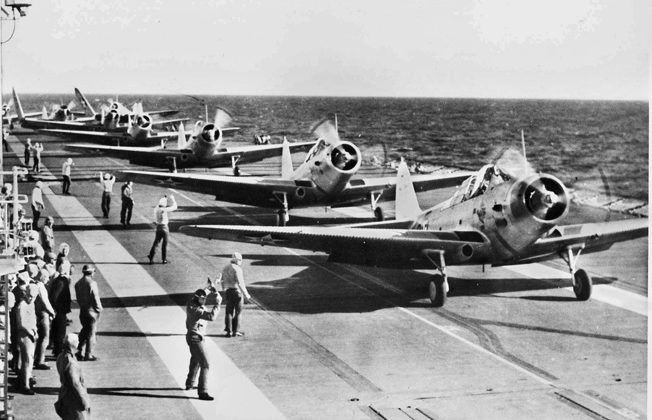
It came in so fast, the tailhook bounced over every cable across the stern, didn’t catch a single one. After that, it plowed through the last barrier, which was a rope net below the island. I braced myself for the impact, but there was none. This plane crashed into the one that had landed a minute before, with the pilot still in the cockpit. I saw the propeller blades cut through the canopy of that parked plane, and I watched them chop that pilot’s body into little pieces. There was blood spattered all over both planes, all across the flight deck, and all over me.
That was the last time I ever watched a plane land on the Yorktown. It wasn’t entertaining anymore. I did not know the pilot who died in that accident or the one who was in the plane that killed him. They were both new to the Yorktown, as were all the other pilots and gunners that landed afterward. I heard that in the radio shack, right before the captain told us where we were going.
The Yorktown‘s Most Important Battle of the War
Midway was one of few islands in the Pacific I’d ever heard of before the war. I copied a lot of messages from there while I was in the radio shack at the submarine base. As far as I knew, Midway was just a Naval Air Station and that’s all that was there, except for the Marines that guarded the place. I pictured it as being just like Ford Island, except that it was way out there in the middle of the ocean, all by itself.
If the captain knew how many Japanese Navy ships were expected to attack Midway, he didn’t say. It’s just as well he didn’t. After what I saw in the Coral Sea, even one Japanese aircraft carrier sounded pretty scary to me.
I didn’t know what to make of it when the captain said this could be the Yorktown’s most important battle of the war. It wasn’t like him to exaggerate, so that sure got my attention, along with the note he read over the loudspeakers. He said it was a personal message to all of us from Admiral Nimitz. I wish I’d thought to write it down. I just remember that it went something like this: “I’m sorry you didn’t get the liberty you deserved after your victory in the Coral Sea. When the Yorktown returns from Midway, I promise all of you a long vacation on the West Coast. And, furthermore, the Navy’s going to throw a party for the whole crew, and it won’t be peanuts.”
I was still tired; my arms were sore from carrying all those crates and boxes. But, all of a sudden, I felt better. Thanks to Admiral Nimitz, I had something to look forward to again.
A Game of Acey-Deucy With Mike Brazier
The Yorktown was more than halfway to Midway on the first of June. I didn’t tell anyone it was my birthday––I was 22—but it was still a good day because I spent all my free time with Mike Brazier. He was one of the new aviation radiomen that hung out with us in the radio shack. I’m not sure how we got to be such good buddies in such a short time. Maybe that’s just the way it is when you’re stuck together on a ship, especially in wartime, but I think Brazier and I would have been friends anywhere. If we’d been ashore, we’d have gone for beer at the Tin Roof and played some pool. At sea, it was just coffee, black, and acey-deucey.
Brazier was even more like me than Siwash, because he had a girlfriend back home. He showed me her picture. I lied and said she was as pretty as Adeline. But he was in love with her, and they were going to get married the next time he got leave. Assuming he survived this mission, which we both knew was not a given for any of us on the Yorktown.
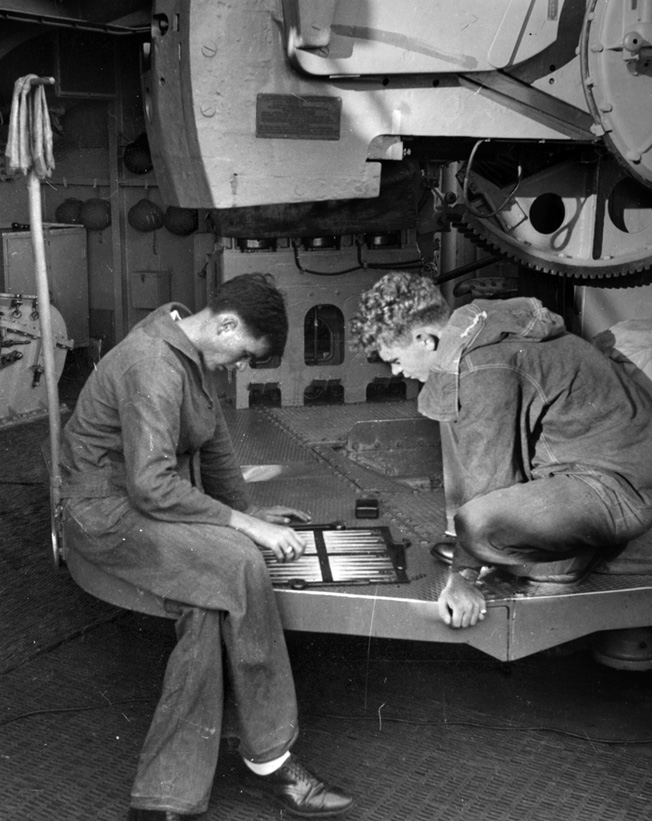
I was more afraid for him than I was for myself, because Brazier was the gunner for the pilot of a torpedo plane. By this time, everybody knew those Devastators weren’t really devastating at all. They were too slow. When they had a 1,000-pound torpedo under their bellies, they could barely make 100 miles an hour. If a Japanese fighter plane––a Zero––got on his tail, the gunner was even less likely to survive than his pilot, because he was in the rear seat.
Brazier never said he was afraid on the way to Midway. We never even talked about it. But I know that he wasn’t concentrating very well when we played acey-deucey that day. I beat him two games out of three.
Radio Silence Off Midway
On the second of June, Siwash told me we were getting close to Midway. I never saw the island, but I saw a lot of ships in the distance. It didn’t take long for word to get around that we were about to join task forces with the Hornet and the Enterprise. Counting all the cruisers and destroyers around the three carriers, there must have been at least 20 warships altogether.
I would have liked to talk to the other radio gangs, but that was not allowed. Under radio silence, the only way we could communicate was through the signalmen, the guys that ran up the flags or flashed the lanterns. We couldn’t even talk to our own pilots on the radio for fear of giving away our location to the enemy.
Everyone had an opinion on how CinCPac knew that a Japanese carrier task force was on the way. Some said Admiral Nimitz had a spy inside their government. Personally, I thought it had to be somebody really high up in the Imperial Japanese Navy. I was more interested in discussing the enemy’s strategy.
In the radio shack, we thought Japan wanted Midway as a base for their next attack on Pearl Harbor. If they could get Pearl Harbor, too––well, that was the ball game. There would be nothing left to keep the enemy carriers away from the West Coast. I could just see the bombs falling on San Diego and Los Angeles.
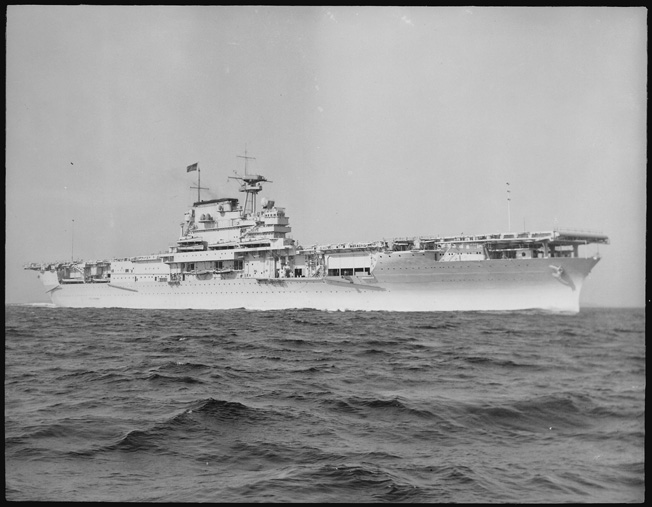
I remember the night of June 3, too. That was when I heard we were looking for at least four Japanese carriers. Maybe five. They were expected to attack Midway in the morning, but we still didn’t know where they were. It was the same kind of tension as in the Coral Sea, only 10 times worse, because I had a better idea of what was going to happen. I couldn’t eat or sleep, and I sure as heck couldn’t pretend I wasn’t scared.
So I went down to the hangar deck by myself and just walked around. It looked like they’d added more antiaircraft guns than we had before. There were all different sizes of guns, every 10 or 12 feet around the hangar deck. I wasn’t sure it was enough. Those Japanese carrier pilots were so skillful, and all it took was one to plant another bomb on our flight deck. I didn’t want to see any more burials at sea. That was the worst outcome I could imagine at the time.
Three Burning Japanese Carriers
The klaxon went off on the morning of June 4. When I got to my battle station on the bridge, I heard the officers say that Midway was under attack. That was actually a relief to me. It meant that the enemy carriers had no idea we were there. They never would have sent their planes to bomb Midway if they’d known three American carriers were near enough to strike back. I heard the captain say Hornet and Enterprise had already launched their torpedo planes. The Yorktown’s took off a while later.
When Brazier’s squadron was in the air, I tried tuning into their frequency. All I got was static. It was over an hour before any of the Yorktown pilots broke radio silence. The first pilot’s voice I heard was from a dive-bomber squadron. He said they had just sighted a Japanese carrier, and, oh, boy, was that guy mad. He’d accidentally lost his bomb somewhere over the ocean, shortly after takeoff. I guess there was something wrong with the release lever. But he was going to dive on the enemy carrier anyway, unarmed. That was just crazy. I think there was an awful lot of that kind of courage at Midway, on both sides.
I put the dive-bomber frequency on the loudspeaker; all the officers on the bridge of the Yorktown were listening. I heard the lead pilot say, “That carrier is getting ready to launch!” and “Let’s go get it!” and “Okay, then, follow me!”
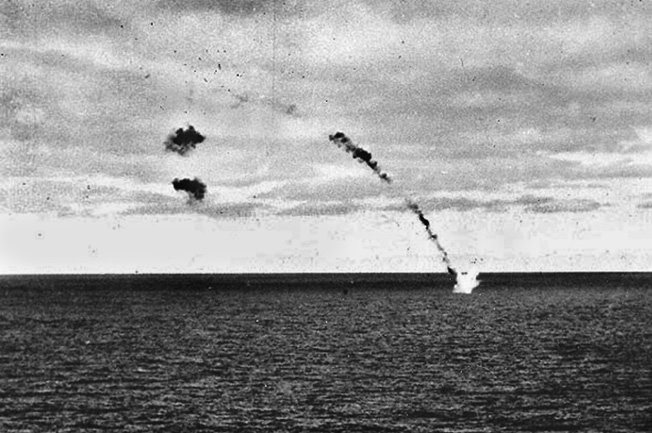
The next five or 10 minutes were awful. We didn’t know what was happening until the dive-bombers spoke again. I could hardly believe it when they said nobody was shot down. They also said that the enemy carrier was in flames. They didn’t have enough fuel to stay and watch it sink, but they all agreed it was done for. The pilots also told us they saw two other Japanese carriers, and they were burning, too. We didn’t know who was responsible for that. I hoped it was Brazier’s torpedo squadron. I still had nothing but static from them.
The Japanese Bombing Run
The communications officer had an urgent message for the captain: The Yorktown’s radar had just picked up a group of planes. They were less than 40 miles away, and everybody knew they weren’t ours. Apparently, the enemy had caught on to the idea of flying low when they approached the ship. They came in under the radar.
Captain Buckmaster grabbed the mike and told the fighter pilots to intercept the Japanese planes. I also heard him reminding all the senior officers on the bridge to be careful when they spoke on the radio. They were not allowed to refer to us as the Yorktown; they were supposed to use our code name, which was “Scarlet.”
That made no sense to me. I thought they should have just told the Japanese pilots who we were. If they listened to Tokyo Rose as much as we did, maybe they would believe they were bombing a ghost ship. If that wasn’t enough to make them nervous, maybe they would at least wonder what else their leaders got wrong. Anything to mess up their aim.
The Yorktown’s fighter planes were about 20 miles out when they engaged the approaching enemy planes. I heard one of our pilots say, “Where’s my wingman?” and another was shouting, “Get that Zero off my tail!”
The first plane I saw shot down was a Japanese dive-bomber. There was a trail of fire and smoke behind it and a huge splash when it hit the water. I heard the antiaircraft guns on the cruisers and destroyers booming in the distance. They shot down several more. But I know at least a few enemy planes got through all that, because there was one coming right at us on the bridge.
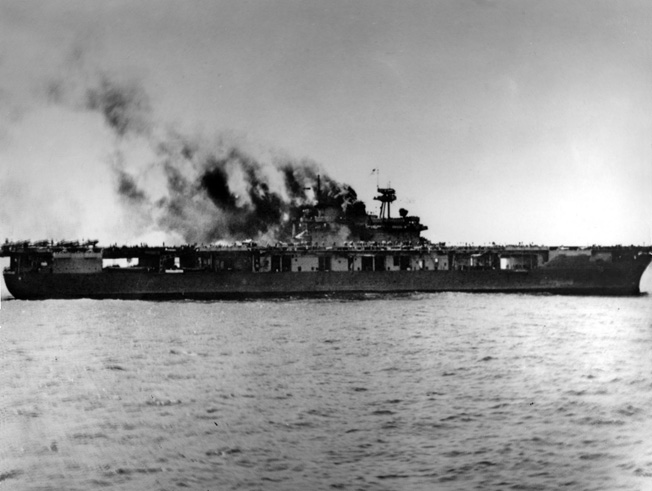
For a second or two, that was all I could see. I thought it was going to crash into the island and kill us all, until that plane disintegrated into a million pieces. Somebody shot it down before it hit us, but the plane had already released its bomb. So then I watched the bomb, and the bomb filled the window, and it was like in slow motion, the way the thing tumbled end over end. I couldn’t take my eyes off it until it exploded, and then I hit the deck.
When I looked up, I saw a huge cloud of black smoke and shrapnel outside the bridge, and the captain was not standing in front of the window anymore. He was inside the radio room with me. I wanted him to stay there, but he didn’t. He stepped out again, because the helmsman couldn’t hear his turning orders, and another plane was coming toward the bridge, and there was another big explosion, and I fell down again.
The dials on the radios were flickering, and I didn’t believe this was how I was going to die because I’d just turned 22. I heard men shouting––no, screaming–– somewhere outside the bridge, but there was no sound at all from the ship’s engines. The Yorktown was dead.
A Hole in the Deck
I’m not sure how long I was out. I came to dizzy and disoriented. My ears were still ringing from the explosions. It hurt to breathe because of all the smoke on the bridge. Worst of all, I was alone in the dark. I have no memory of when the captain closed the door to the emergency radio room. I wasn’t even sure the enemy planes were gone until I heard his voice. He was not shouting anymore; he was talking to someone on the ship’s phone. At least that still worked. It sounded like he was taking damage reports from the engine room. He was so cool and steady, you’d have thought he was inquiring about his dry cleaning or the price of fish.
The Yorktown was not moving when I opened the door. I honestly believed the captain was about to give the “abandon ship” order. Which was a scary thought, because I didn’t know how. The Navy didn’t teach us that in basic training. Then again, maybe they did. I missed a lot of stuff while I was in the pool.
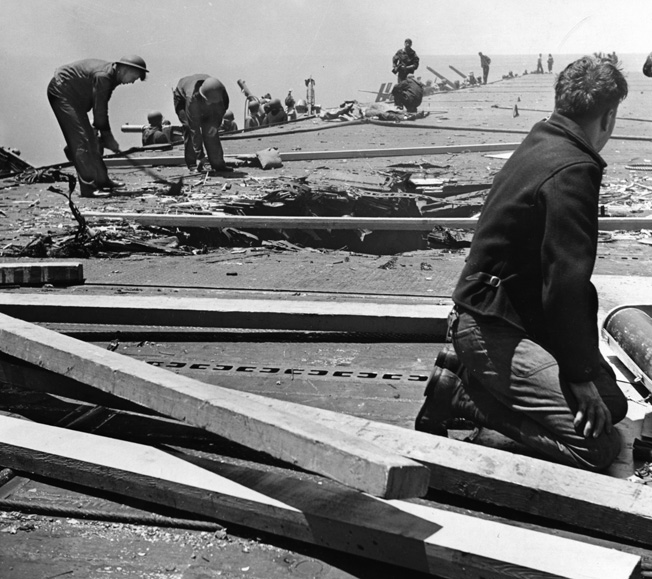
You don’t know how glad I was when I heard the captain say the engines were going to restart. I even heard him tell the XO that we could start launching and recovering planes as soon as the flight deck was repaired. I thought that was a pretty big if. There was only one hole in the flight deck, but it was huge––10 or 12 feet wide––and it was less than 30 feet from the island. If that bomb was intended to kill the captain and all the senior officers on the bridge, I would call it a near miss. I knew I was lucky to be alive.
There was no reason for me to stay inside my battle station at that time, so I volunteered to help repair the hole in the flight deck. Not being a carpenter, there wasn’t much I could do there either, but I figured they could use another hand for the grunt work. I don’t know if I would have done that if I’d known that the hole was really the least of the bomb damage.
Burials at Sea
I didn’t see the bodies until I climbed down from the bridge. I don’t know how many––20, 30, maybe more. They were hard to look at and hard to count, because most of those men were just blown to pieces. The guys in the ship’s band––I remember the harp insignias on their sleeves––were helping the corpsmen lay out all the body bags.
I was having flashbacks from the smell. There is nothing close to the odor of cooked human flesh. I smelled it at Pearl Harbor, I smelled it in the Coral Sea, and somebody must have burned to death on the flight deck at Midway, because I smelled it there, too.
The ship’s carpenters were calling for more lumber and sheet metal to repair the hole. I turned and ran with the guys who were going down to the hangar deck to get it for them.
There were a lot of casualties on that level, too. I saw the assistant chaplain on his knees next to a row of about 15 body bags. I thought he was praying for those men, which he probably was, but then I saw his hands groping around inside the bags. He was searching for their dog tags, and he would not allow the corpsmen to pull the drawstring until he found them. There really was no other way to identify those poor guys. Their faces were just gone.
The chaplain himself was already doing burials at sea, or I should say, he was trying to. He had five or six sailors to help him set up the board with the flag draped over it, but they weren’t doing very well. I saw one guy slip and fall down in the blood, another was passed out, and two of them were hanging over the rails vomiting. They were just teenagers, probably fresh out of boot camp when they joined us at Pearl Harbor.
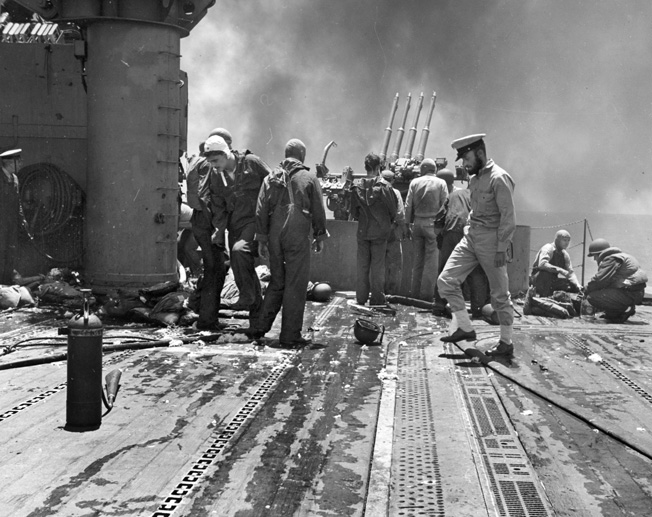
I felt sorry for them. They hadn’t even been to sea for a week, and now they’re in combat, picking up parts of bodies and putting them in bags and hosing the blood off the deck and tipping the board.
There was no time for a proper funeral for anyone at Midway. Everyone knew there were at least one or two more Japanese aircraft carriers out there, and it was still early in the day. Their search planes had plenty of daylight to find the Yorktown and hit us again if they wanted to. I assumed they would. And I’m not going to lie and say I was any less afraid of the next attack than those guys that were fainting and puking on the hangar deck.
But I guess I’d finally got to the point where I could let go of the fear and do my job. I don’t know why I never got sick to my stomach. It never affected me that way. It just made me more angry, made me want to fight harder.
I dropped my load of lumber on the flight deck and went back for more. The ship’s carpenters worked up more of a sweat than I did. They had that hole patched in less than an hour.
“Don’t Start Chasing Tails”
I was inside the radio shack when I heard the engines come back on line. A few minutes later, I felt the ship begin to move. The radio gang was cheering. We cheered some more when the radios stopped shorting out, but I still couldn’t get anything but static from Brazier’s torpedo squadron. The other radiomen were worried, too. We were all friends with the gunners, and they were long overdue.
I didn’t want to discuss what could have happened to the torpedo planes. I just wanted to keep listening to that frequency, and that’s what I was doing when we got the next radar warning: Another large group of planes was approaching the Yorktown. We couldn’t tell how many or what kind; we just knew they were Japanese. I didn’t think it was a social call. I was halfway up the ladder to my battle station when the klaxon went off for the second time that day.
The ship was still not up to full speed, but it must have been something close to 20 knots because I saw fighter planes taking off from the flight deck. Captain Buckmaster was already talking to the pilots in the air when I got to the bridge. He always told them, “Protect the fleet,” but this time he also said. “Don’t start chasing tails.” I’m sure they knew what he meant.
Everybody knew the Japanese fighter planes were faster than ours. It was useless to try to get behind a Zero. As my friend Brazier explained it to me, our pilots were just beginning to learn some new maneuver where they flew in pairs. The object was to let the Zero get behind you, and then lead him in front of your wingman’s guns. It was just funny to hear the captain put it that way. “Chasing tails” was something we did on liberty. It’s what sailors called it when we were trying to get the attention of the girls ahead of us on sidewalks and beaches in Honolulu. In any other situation I would have laughed. But not at Midway. Those fighter pilots were the Yorktown’s first line of defense, and they were willing to die to protect her.
“Torpedoes!”
I don’t know how many enemy planes our fighters shot down. I’m sure they did their best, and so did the cruisers and destroyers around the Yorktown; I could hear their antiaircraft guns going off in the distance. But I still didn’t know what kind of planes were attacking us until the XO hollered, “Torpedoes!”
I did not see the wakes––the captain was blocking my view––but I knew what was coming. I braced myself. I did not fall down when the ship swerved out of the way. Captain Buckmaster was so good at that, I’m sure he would have avoided them all if the engines had been at full speed. But then I saw the plane approaching low from the port side. It was only 700 or 800 yards away when it dropped the torpedo. I heard the captain call out another turning order, but the Yorktown wasn’t fast enough. There was nothing anybody could do but stare at the wake of that torpedo and wait for the hit.
I wanted the captain to take shelter inside the radio room with me, but he did not. He was just holding on to the door when the torpedo exploded. It felt like some giant hand reached down and grabbed the Yorktown like it was a toy, lifted us out of the water and shook us for a few seconds before it let go. There was another big jolt after that, and then the lights went out, and the engines stopped again. It was worse than before, because this time the ship was listing––turning over on its side––and if it didn’t stop, we were going to be upside down in the water. For a couple of minutes, I thought I knew what it must have been like for all those sailors on the Oklahoma at Pearl Harbor.
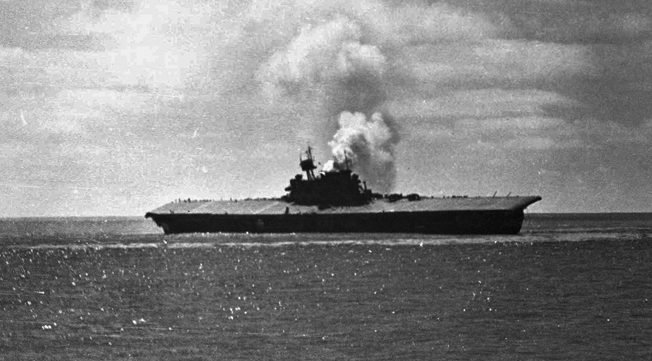
The Yorktown was sitting at about a 20-degree angle when the captain gave the order to abandon ship. I still didn’t know the procedure, but, one way or the other, I knew I had to get off. Right now. I already had my life jacket on. I wore it like a vest all the time––never rook it off except when I was in bed. I just had to make sure the fasteners were good and tight, which gave me all the time I needed to remember the stories that went around after the Lexington sank in the Coral Sea.
As far as I know, most of those guys got off okay, but there were all kinds of what-ifs. Like, what if the enemy pilots had come back and strafed them while they were bobbing in the water close to the ship. And sharks.
But the one that really got to me was the meaning of the term “displacement.” As I understood it, anything that floats displaces a certain amount of water, which is like saying it makes a hole in the ocean. Whenever a ship sinks, the ocean comes rushing in to fill that hole, and it creates a whirlpool––the same as water going down the drain in a bathtub. The bigger the ship, the bigger the hole, the bigger the whirlpool. Well, they didn’t come much bigger than the Yorktown.
I was trying to calculate the physics in my head. I didn’t know if I could swim fast enough to escape getting sucked into the whirlpool when the ship went down.
Looking For Siwash
I followed the quartermasters down the ladder from the bridge. Siwash was not with them. I ran back up to see if he was still in the chart room. He was not. I didn’t see him on the flight deck, either. That’s where everybody was gathering, waiting in lines for a turn to climb down the ropes they had thrown over the side. There was some confusion, but no great pandemonium.
I even heard a few guys joking about what a nice day it was to go for a swim, but it was that false, nervous kind of laughter, so I know I wasn’t the only one that was scared. I saw several sailors refuse to wait their turn. They stepped out of the rope lines and ran up to the edge of the flight deck and jumped. Well, the ship was tilting closer to the water on the port side, but it was still a good 30-foot drop. I wasn’t about to do that.
But there were at least 200 guys ahead of me in every line. I didn’t know if we had that much time. I was trying to think of a faster way to get off the ship myself when I saw a couple of radiomen going down the ladder to the hangar deck. They called out to me; I ran and joined them.
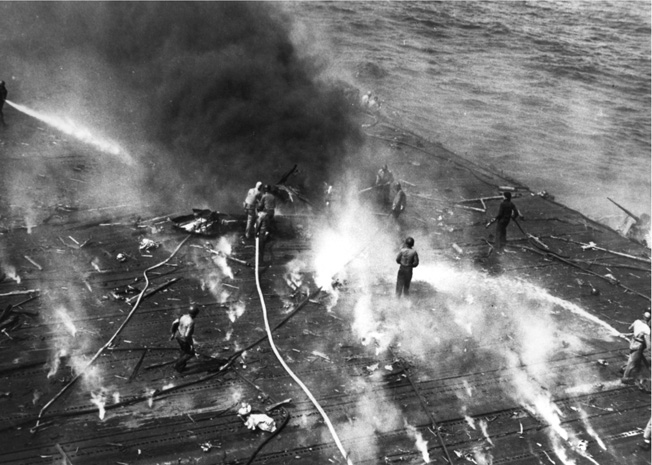
There were ropes thrown over the side of the hangar deck level, too, and hundreds of guys in the lines for those. We ran past them, and we didn’t stop until we got to the fantail. I don’t know why nobody else had thought of jumping off the ship from there. It was only about 12 feet above the water at that time. Maybe they thought the screws––the ship’s propellers––were still turning. I knew they weren’t. It was perfectly safe to jump off the fantail as long as the ship was dead in the water, which it most definitely was, but I didn’t want to leave without Siwash.
I was about to go back and look for him in the rope lines when somebody said he was probably with the admiral. That made sense to me. The admiral left us right after the first attack, and I hadn’t seen my friend since I volunteered for the work party on the flight deck. I wouldn’t be surprised if the admiral did take Siwash with him when he got off the Yorktown. I was just sorry I never got to say goodbye.
Jumping Ship
So I stayed where I was, along with about 50 other sailors. There was an officer on the fantail, dividing us into groups of about 15. When the first group stepped up to the edge, I heard him shout: “Stay together! Swim as far away from the ship as you can!”
I don’t know what time that was. It must have been midafternoon, because when it was my group’s turn, I looked down at the ocean and saw rainbows. The sun was shining on the water, making rainbows on the oil leaking from the stern. The men on either side of me were jumping, and the officer was yelling at me, “Go! Go now!” I could feel the next group of guys crowding behind me, pressing against my back.
It was too late to change my mind. I took a deep breath and jumped into the rainbows.
I swam until I was out of breath, and then I turned over on my back and paddled some more that way. When I took my first look back at the Yorktown, I was nearly a hundred yards away. I thought the ship was lower in the water than before, and I was sure it would sink in the next few minutes. I was not at all sure that I was far enough away to escape the whirlpool, but I was too tired to swim another stroke. There were dozens of men floating in the water around me. I don’t think any of us believed we were going to live another day until we saw the destroyers approaching.
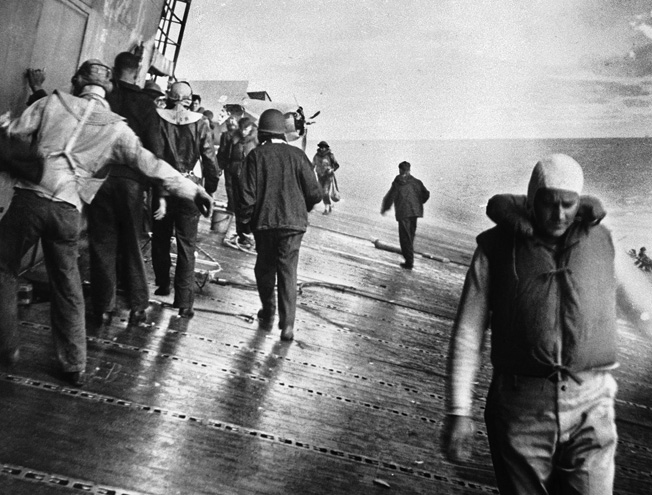
The destroyers’ lifeboats were not rubber rafts with oars or paddles, like on the planes. These were regular metal boats with motors, more like the liberty boats at Pearl Harbor, only not as big. It looked like they were picking up maybe 15 men at a time. Well, there were more than a thousand of us in the water by then, so I knew it might be hours before they got around to me.
I heard a few guys holler “Taxi!” at the lifeboats; some whistled and waved. I was saving my breath in case I had to make another mad dash.
I just floated on my back and watched the sky for enemy planes and tried not to think about sharks. The water wasn’t all that cold; the wind just made it seem so. In about 30 minutes, I was numb all over. I couldn’t even talk when the lifeboat finally came.
“Welcome to the Hughes”
There were 12 or 13 of us in that lifeboat when it pulled alongside one of the destroyers. We had to climb a Jacob’s ladder to get aboard. I’d never done that before either. It was like crawling up the side of a big ship on a spiderweb made out of ropes. I was not very graceful at it.
The destroyer crew was lined up on the main deck, cheering for me, telling me where to put my feet so I wouldn’t fall off. I was still a couple of ropes away from the top railing when somebody reached down, grabbed me by the armpits, and yanked me the rest of the way. I landed in a wet heap; somebody threw a blanket around me. After that, it was all hot coffee and “Welcome to the Hughes.”
I believe every man on that ship came by to shake my hand or pat me on the back. In less than an hour, they had me warmed up and showered and walking around in somebody else’s clothes. I don’t know what they did with mine. Probably threw them away. They were covered with oil.
The other ships must have rescued hundreds from the Yorktown that day, but there were only about 25 of us on the Hughes. Maybe that’s why we got so much special attention from the crew. The cooks gave us extra-big helpings of meat and potatoes and gravy; we had all the ice cream we could stand. Even the officers stepped aside for us on the ladders, like we were some kind of heroes.
I didn’t think that was right. I knew I was not a hero. I was just a survivor.
Epilogue
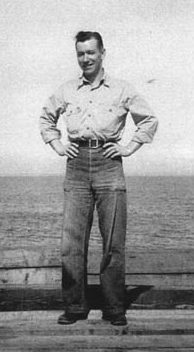
After being rescued at sea by the destroyer Hughes on June 4, Daves and the other survivors watched in helpless horror two days later as a lone Japanese submarine evaded the destroyer screen and fired four torpedoes at the dead-in-the-water Yorktown and a destroyer, the Hammann. The Hammann was sunk immediately and the carrier went under the next day. Daves and the remaining crew returned to Pearl Harbor, where new assignments in the long war awaited them.
After surviving the war and moving to Spokane, Washington, Ray Daves married his girlfriend, Adeline Bentz. He became an air traffic controller in 1946––a job he held until retiring in 1974.
Ray and Adeline had two daughters, Rayma and Janet (who provided them with five grandchildren and five great-grandchildren). Ray passed away on June 3, 2011––two days after his 91st birthday. (Following publication of the book Radioman, an Act of Congress, signed by President Obama in 2010, named the air traffic control tower at Spokane International Airport for Ray Daves.)
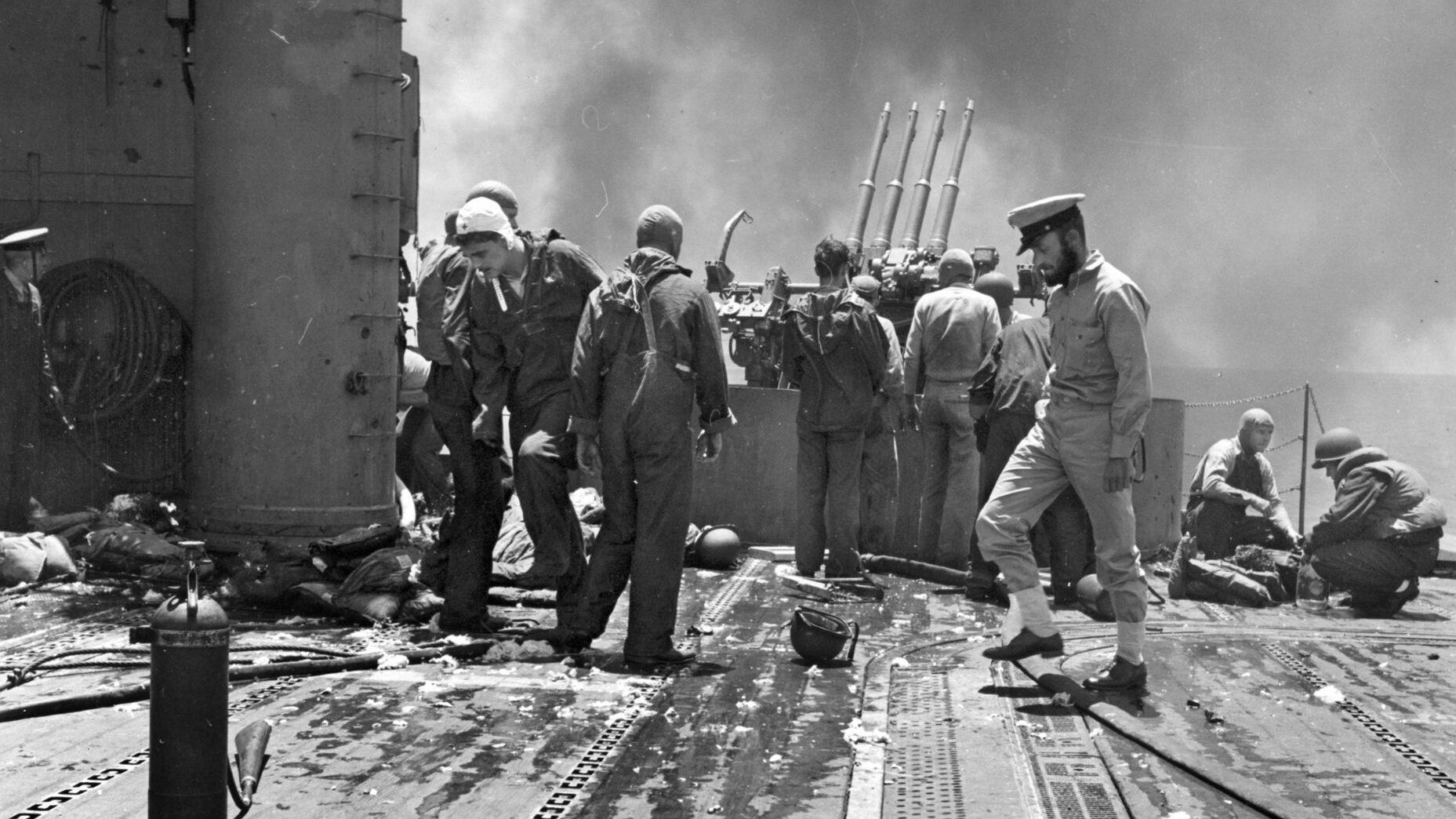
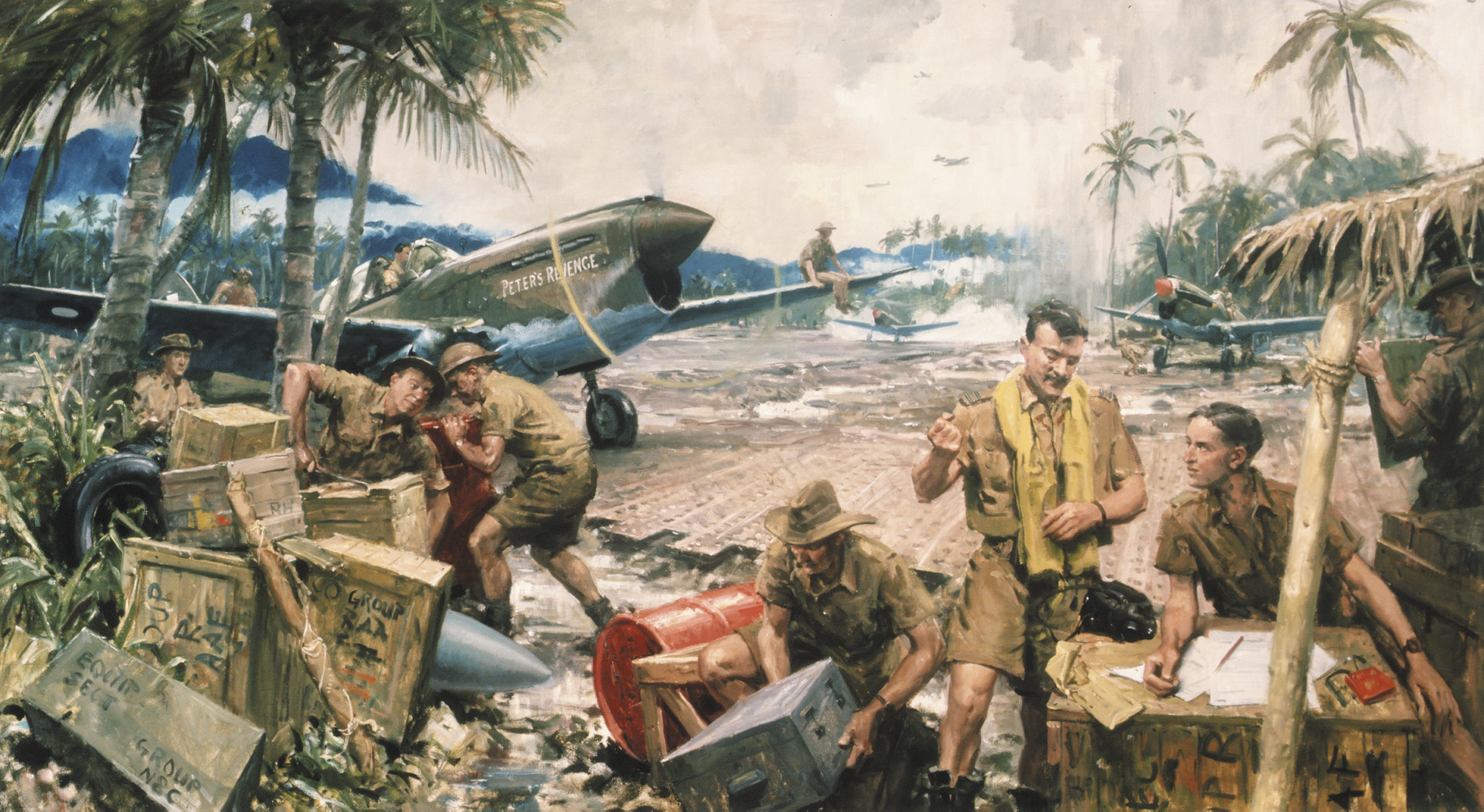
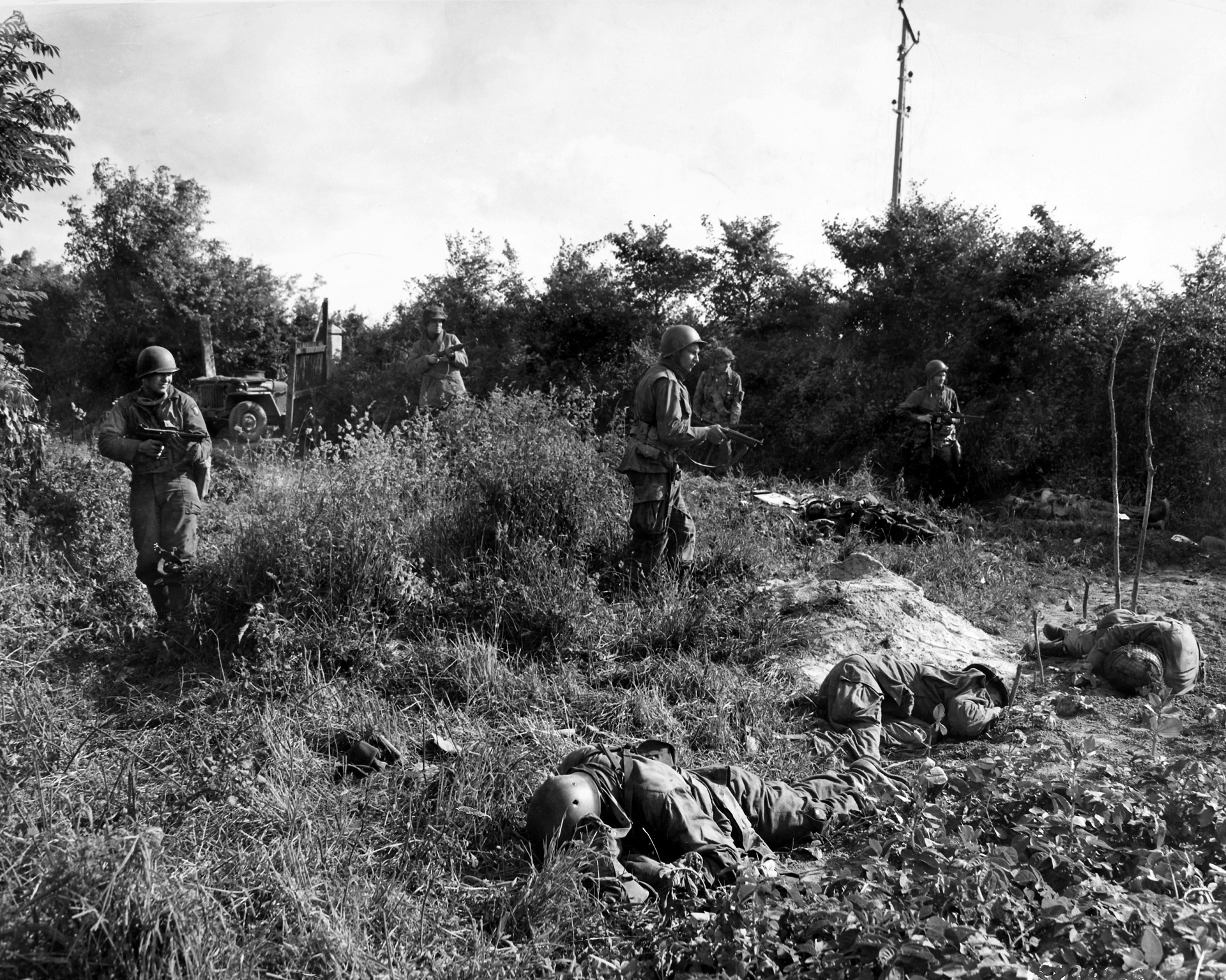
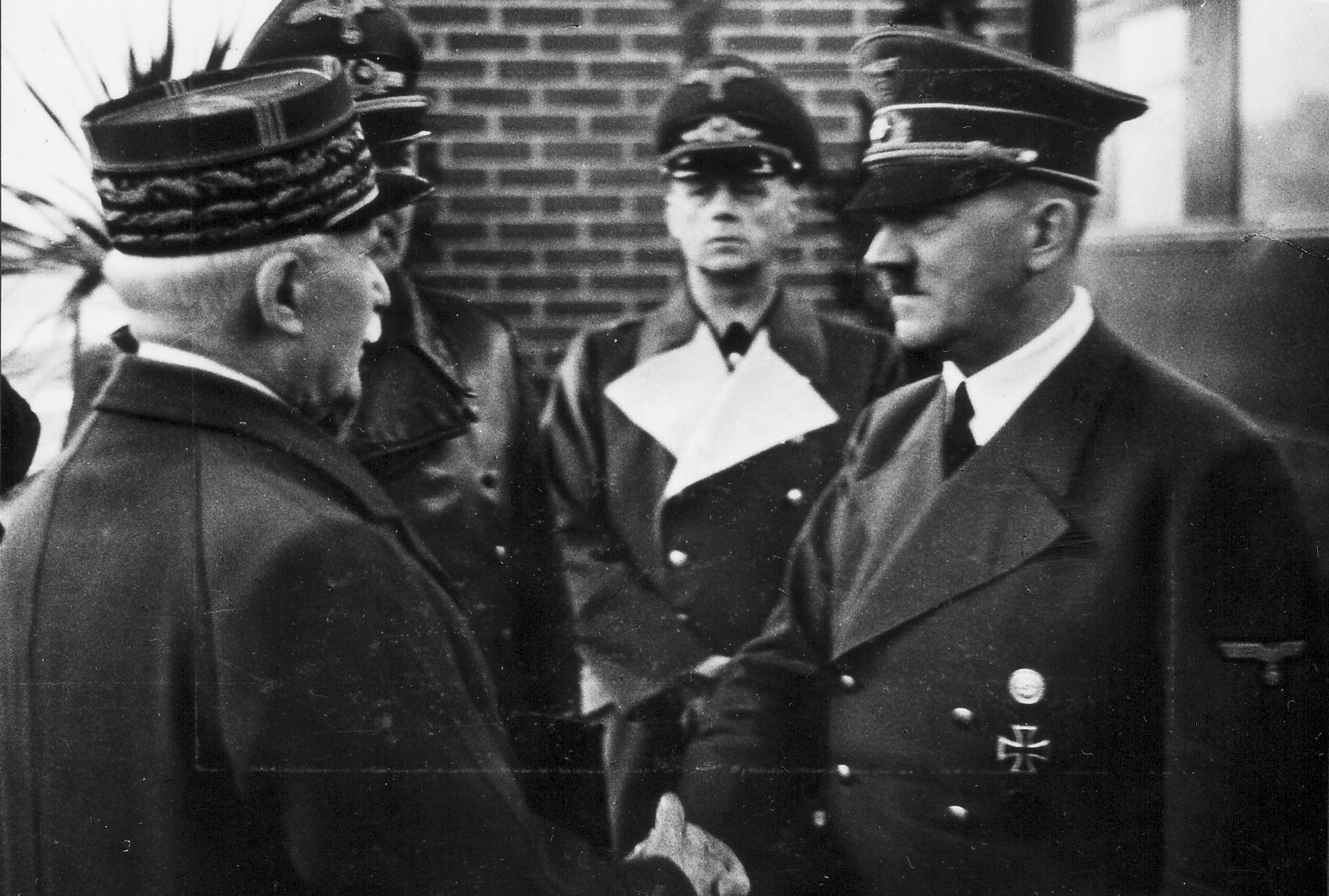
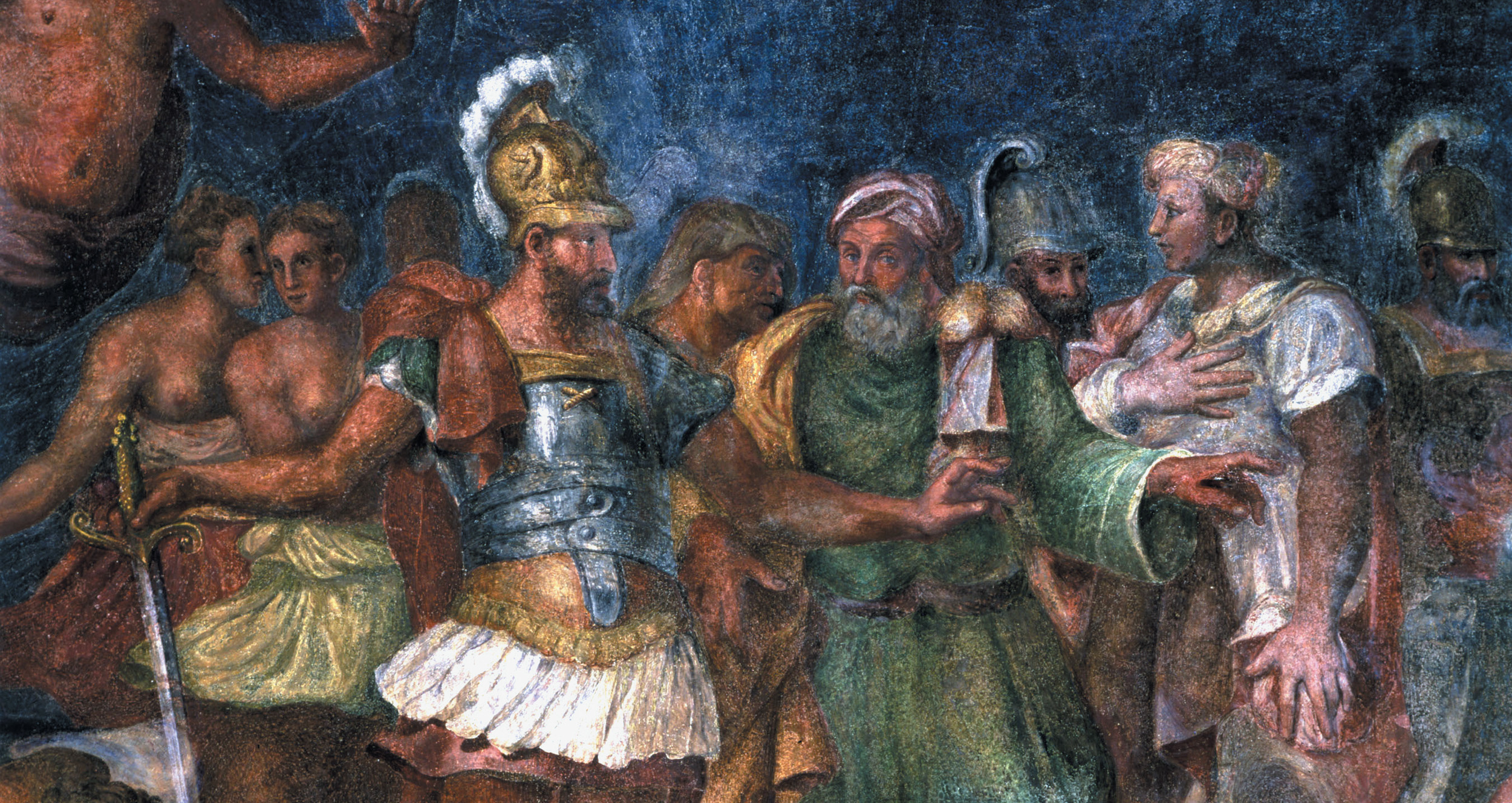
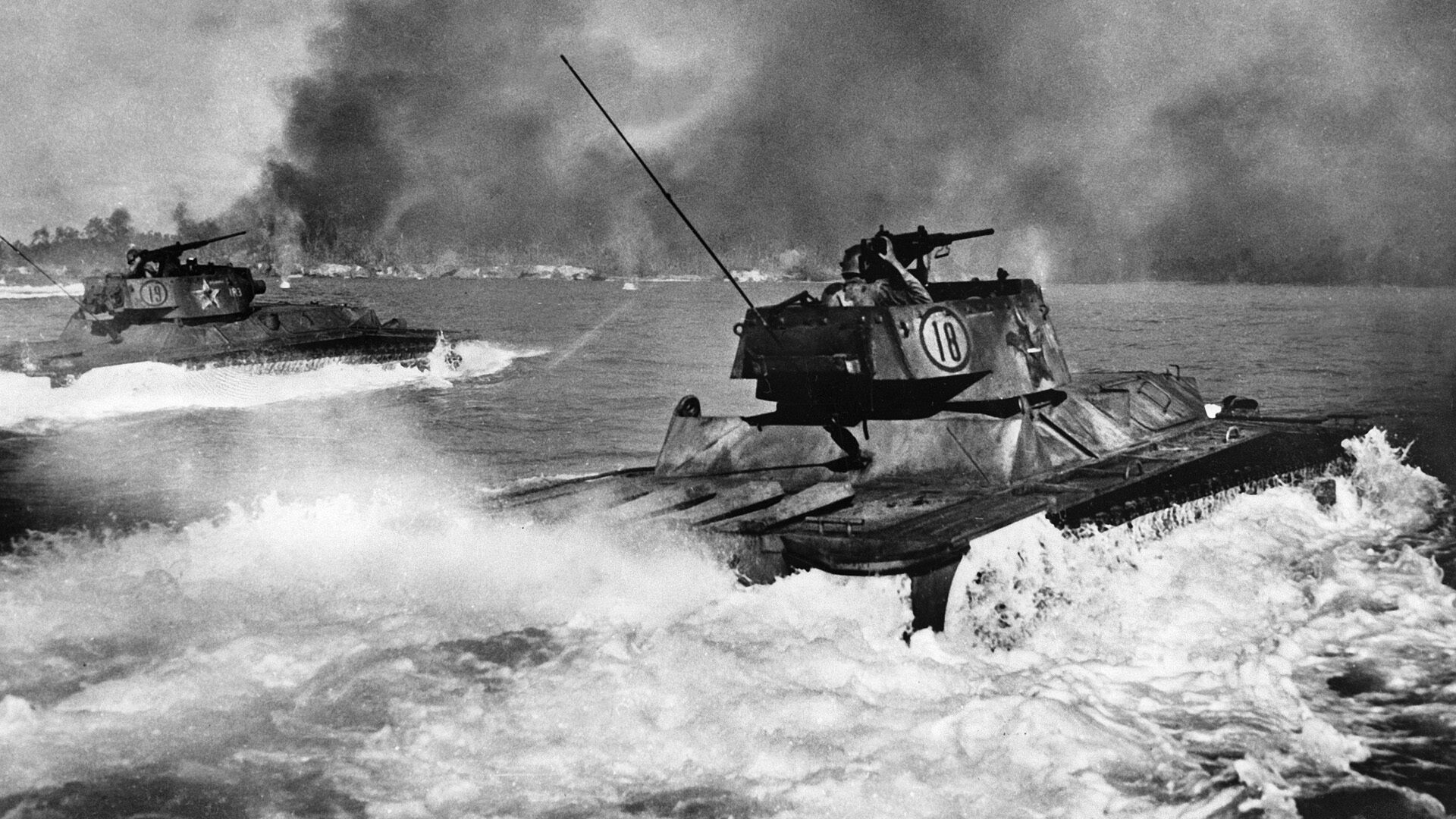
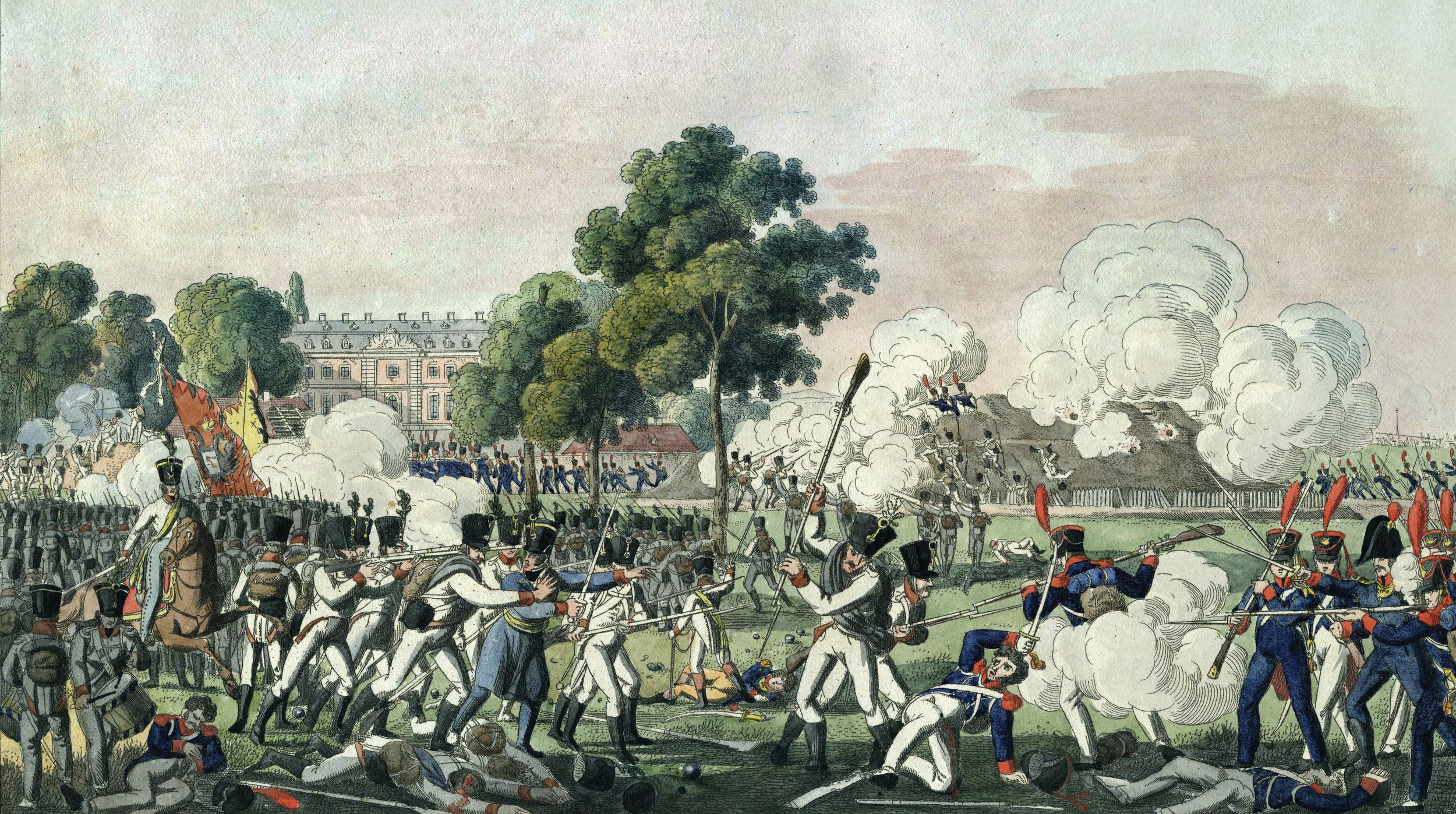
My brother in law, James Francis Risher, was also on the Yorktown and was one of the last rescued. He was picked up by the USS Morris, DD417. Upon return to Pearl he was not allowed liberty for some time. He said that was because they didn’t want the Japs to know for sure that the Yorktown had been sunk. James Francis was next assigned to the the USS California, which had been raised after the attack at Pearl Harbor. He fought at the Battle of Suragua Straight where the American battleships crossed the T on the Japs.
He was buried in Meridian, MS with full military honors.
May they all rest in peace!
My dad, LV “Bill” Walls served aboard the Yorktown CV-5 for the duration of her service in the war. He completed basic training on or around December 6, 1941. The attack on Pearl Harbor caused all leaves canceled. He then boarded the Yorktown in VA and served until her sinking at Midway.
Thank you for this article. I’ve been piecing together information about dad’s experience for years.
A great article about a great ship and it’s crew.